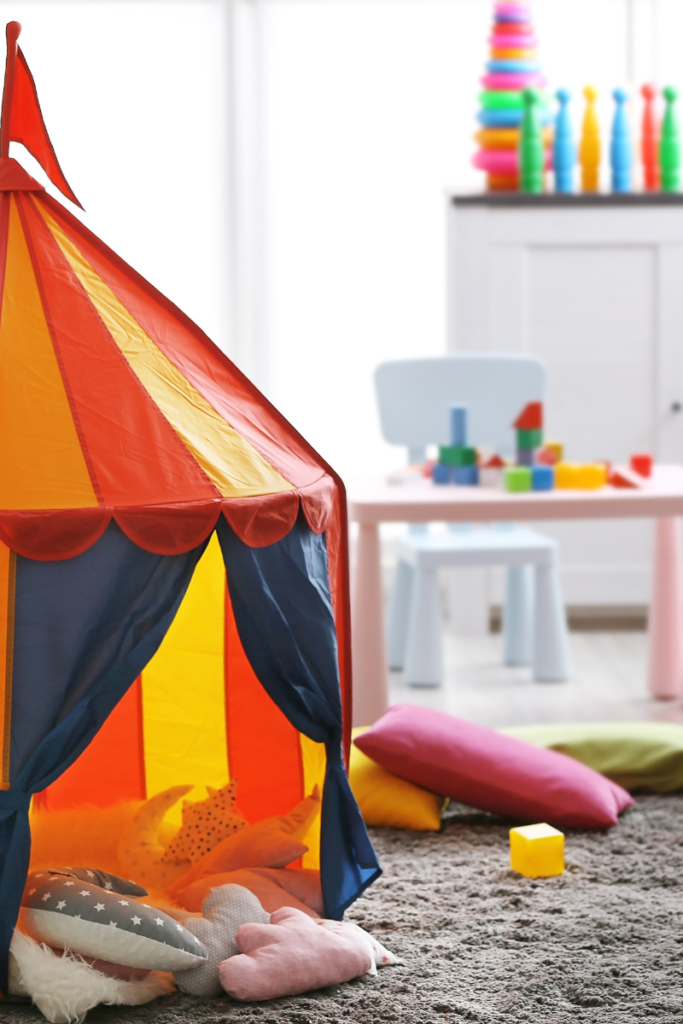
Sensory spaces in classrooms help provide students effective ways to self regulate and go back to learning. With so many products and ways to support sensory spaces, it can often feel overwhelming at times. After creating multiple sensory spaces for the teachers at my school, here are the essential things to consider.
Seating
Students need seating that clearly identifies the space within your classroom. Two main factors dictate your selection: size of your space and age of your children. It is important to select engaging experiences for you students. For students in Preschool through Kindergarten, consider using a castle play tent or pirate play tent. Play is such a critical way for younger students to process, and having a welcoming space helps younger students realize that your sensory space is special. For older elementary students, tents and bean bags are a perfect options. Tents can range between small ( only one student), to extra large (multiple students). Bean bags also provide a range of size options available.
Timer
It is important to use the sensory space as tool for student to self regulate, not play in or avoid work. That is why having a timer in the sensory space is important. I recommend 5 or 10 minute timers. This timespan allows students to self regulate, while also respecting the integrity of the space. Sand timers are my favorite timer option. They help students monitor their time without making noise and they also provide a relaxing visual experience while students watch the sand go down the timer.
Sensory Items
Having a balance of sensory items is important for a balanced sensory space. Here are some things to put in your space: popits, squishy balls, sensory fabric squares, liquid motion timers, pop tubes, fidget spinners, and squishes. I usually avoid things like playdough and slime. While these are amazing tools for self regulation strategies for students, they can be messy and can ruin the sensory space quickly.
Creative Items
Some students prefer to regulate their feelings with art and it is important to put this option in a sensory space as well. Consider putting colored pencils/crayons, white paper, mandala coloring sheets, cartoon coloring sheets, pencils, and doodling prompt worksheets. Avoid messy art mediums such as paint and glues, as this will also mess up the sensory space.
Creative Items
Make the space welcome with inexpensive pillows, blankets, and stuffed animals. Select ones that are easily washed or replaced at the end of the year. Have students give input on things they would like to add to their space.
Sensory Spaces are an amazing resource for student and they are so much fun to create. Have fun creating your sensory space!